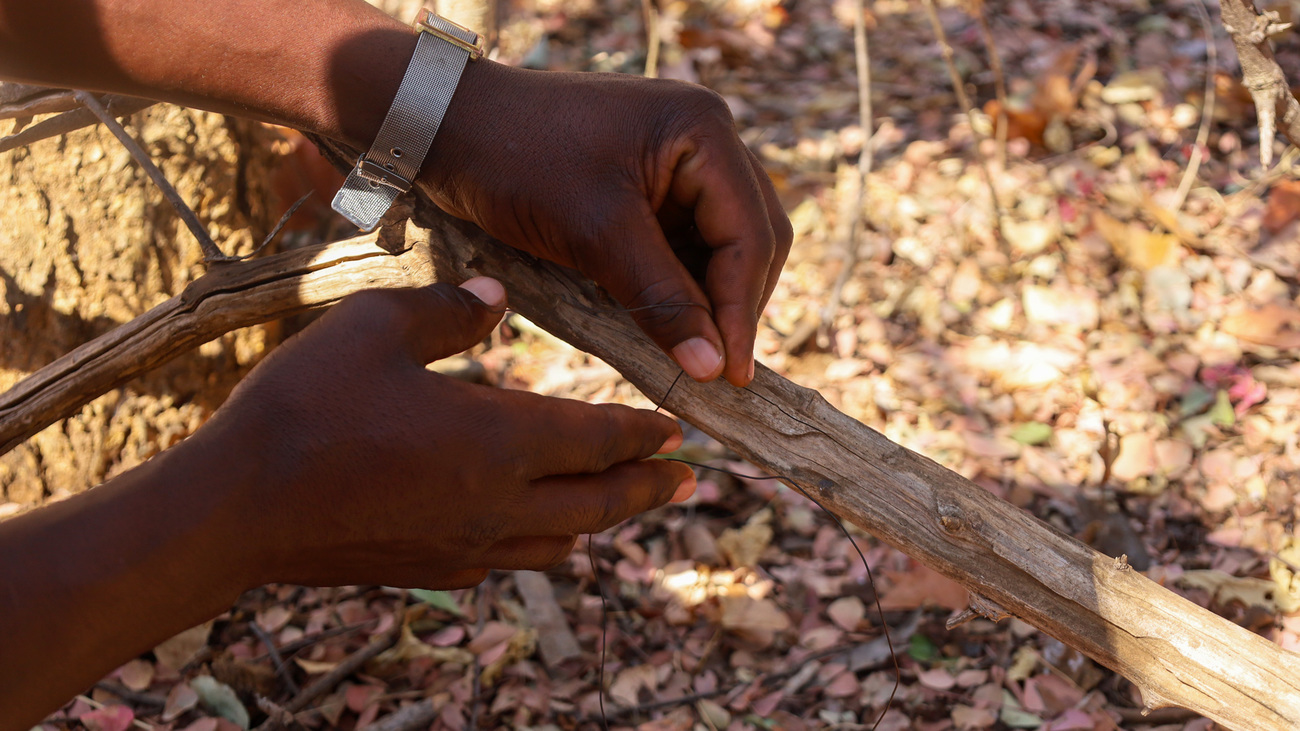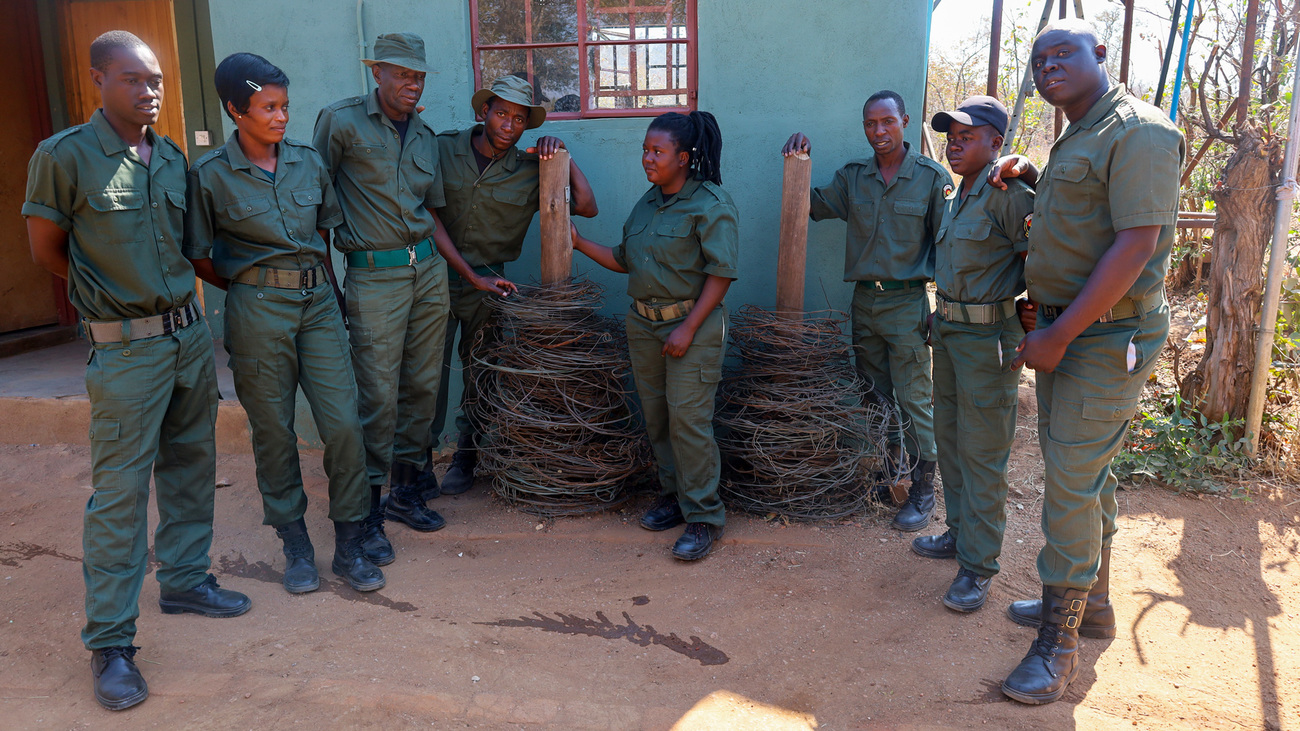Wildlife flourish again near Hwange National Park thanks to snare response team
Wildlife flourish again near Hwange National Park thanks to snare response team

By Arnold Tshipa, IFAW Field Operations Manager for Zimbabwe
African savannah elephants, kudu, and other wildlife are once again roaming safely across a 20-kilometer buffer area that borders the immense Hwange National Park in Zimbabwe, thanks in part to the tireless efforts of a specialised on-site anti-poaching team.
The team—staffed by the Dete Animal Rescue Trust (DART) with support from IFAW—has made remarkable progress. In less than one year, the number of lethal snares they have detected in the area has plummeted by more than 80%. At the same time, local wildlife has become more plentiful.
DART program director and wildlife conservation specialist Paul de Montille said that in 2023, a total of 43 wire snares were recovered in the Hwange buffer zone during the three-month period from April to June. This marked a steep decline from the previous year, when a total of 231 were recovered from July to September.
Protecting animals from painful, senseless deaths
The results of the DART team’s hard work were visible during a recent spring afternoon, a time when the midday sun bakes the earth and watering holes become a convergence point for nearby animals.
While a large African fish eagle—Zimbabwe’s national bird—displayed its hunting prowess, three elephant bulls emerged from the thicket, making their way to the waterhole for an afternoon drink and mud bath. A few meters away, a pair of Egyptian geese settled down for a midday sunbath while a male kudu stood proudly on the horizon, its majestic horns held high.
Until about a year ago, this wildlife spectacle could not have been imagined in this area. Now, with the DART team’s dedicated presence and consistent snare sweeps, wildlife sightings like these have become increasingly common.
The steady availability of adequate water is also vital to the return of wildlife, so IFAW recently sponsored the drilling of a solar-powered borehole that now supplies 6,000 liters of water per hour to the main waterhole.

Snare sweeps save lives
‘It is so encouraging to witness a gradual and much-needed rewilding of this buffer area,’ de Montille said. ‘This space is now a safe zone with more and more animals taking up residence. The establishment of the permanent DART base, with the help of IFAW, has been a major deterrent to potential poachers.’
The DART team is carefully trained to understand the terrain and wildlife of Hwange National Park, a 14,600 km² area that boasts 45,000 savannah elephants as well as other mammalian species. Not far from the DART base is the famous, scenic Dete Vlei, a dried riverbed with iconic grassy plains teeming with wildlife.
Whenever park authorities or local safari operators see snared or injured animals in the wild, they contact DART first responders. ‘We recently spotted an injured zebra on the Dete Vlei,’ said James Kuwana, a Hwange-based tourism executive. ‘We immediately contacted Paul and his team to assist with de-snaring. We have developed good relations with the DART team, and whenever we find snared animals, we reach out to them, and they are quick to attend to all the cases.’
Protecting wildlife has the added benefit of protecting local commerce. ‘Wildlife remains the major drawcard for thousands of safari enthusiasts who visit our destination,’ said Kuwana. ‘Guests come here to see animals. Creating safe spaces for wildlife is therefore critical.’

Creating safe spaces for wildlife to thrive
Most wire snares are made from cheap and easily acquired materials such as wire and brake cables. In the case of Dete, most of the snares are made from fallen telephone wire.
‘In 2020, we had to embark on an extensive telephone wire removal exercise and removed a staggering 26 tonnes of wire that could have been used by poachers to snare our treasured wildlife,’ said senior wildlife rescuer Severino Ndlovu. He is leader of the DART team, comprised of four men and four women, which patrols and combs the bushes and savannah grassland with the mission of freeing wildlife from the deadly snares.
‘It’s not an easy exercise,’ noted Ndlovu. ‘It is tough and quite demanding. The wire snares are hard to spot, and it requires very sharp eyes.’ Despite these challenges, the team’s persistence and commitment are bearing fruit.
Neil Greenwood, IFAW wildlife rescue director, said, ‘It is gratifying that our conservation efforts under the IFAW-DART partnership are contributing to the thriving wildlife populations in and around the Hwange National Park buffer area. Our long-term goal is to ensure that wildlife and people can thrive for years to come in one of Africa’s most beautiful landscapes.’
Related content
Our work can’t get done without you. Please give what you can to help animals thrive.